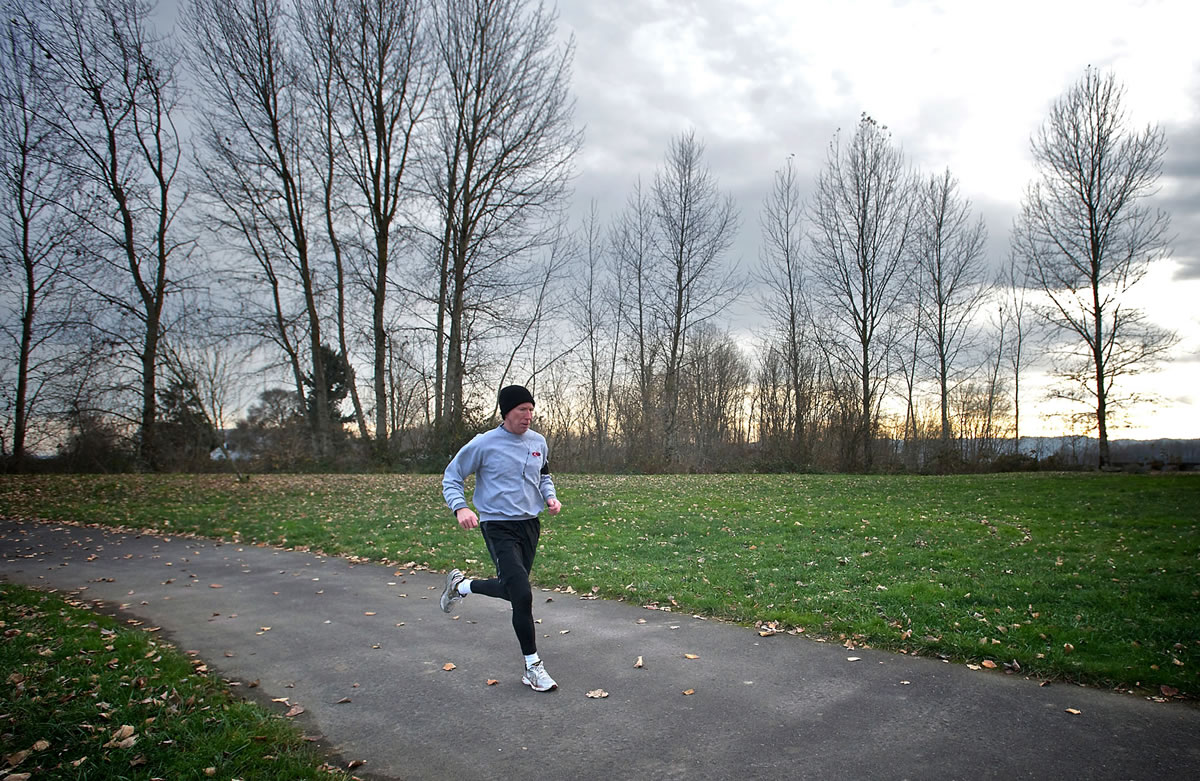Freezing temperatures and the frost-covered ground don’t mean you have to abandon outdoor workouts.
But, like working out in hot weather, there are some things you should consider before lacing up your shoes for an icy morning run.
“A lot of the recommendations are really kind of the same,” said Ted Schatz, a personal trainer at Northwest Personal Training in Vancouver.
One of the most important things to master for outdoor winter exercise is clothing, Schatz said. In the summer, people want wicking material to get the sweat off their skin. But the wicking material is just as important in the winter, he said.
“In the winter, you want that still, because you don’t want the moisture to stay on you. It will make you colder,” Schatz said.
Schatz recommends layering different types of materials, such as wools and performance materials. Gloves and good socks are also important, he said. As the body gets colder, blood vessels will constrict to keep warm blood close to the body’s vital organs. That means extremities will get colder faster, Schatz said.
Some people, particularly those with asthma, may also benefit from wearing a scarf over their mouth and nose until their body temperature rises. The cold air can be painful to the lungs; the fabric will serve as a barrier to the cold air, Schatz said.
If it feels good, wear it
The key, he said, is to find the type and amount of clothing that works best for you.
“Find what makes you comfortable enough so you can go out and do it and not feel miserable,” Schatz said.
Before launching into a workout, Schatz recommends doing a gradual warm-up. Try walking and then progressing into high-knee lifts or lunges. Standing and doing shallow squats will also get the body warmed up, he said.
For most cardiovascular activities, such as running, walking and biking, doing the activity at a lower intensity will sufficiently get the muscles warmed up. So start out with a slower pace and increase the pace as your body loosens up, Schatz said.
Save the static stretches for after the workout when your body temperature is up, Schatz advises. And even then, Schatz recommends stretching indoors; your body temperature will drop quickly if you’re sweaty and standing outside in cold temperatures, he said.
Once you’re ready to hit the streets, pay careful attention to the ground. Watch for ice and be aware of slippery surfaces. The paint of crosswalks, for example, is slipperier than the asphalt, Schatz said.
Another important — but often overlooked — component to cold-weather workouts is staying hydrated, Schatz said. In the summer months, people get hot and thirsty, which prompts them to drink water, he said. In the winter, those physical cues aren’t there, but the body is still using water to regulate its temperature and needs to be replenished, Schatz said.
Taking care before and after outdoor workouts will allow you to continue your outdoor exercise routine — regardless of the weather.
“Fortunately, we live in a moderate enough climate it doesn’t really get cold enough where you can’t exercise outside,” Schatz said. “It’s the Northwest thing. If you’ve got the right gear, you can work out pretty much anytime.”




